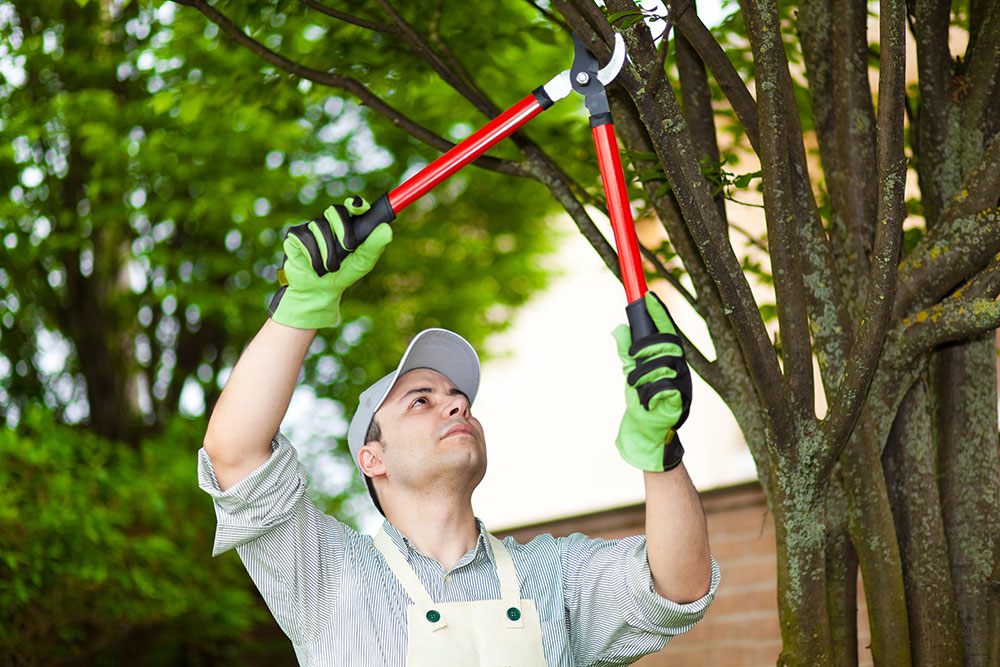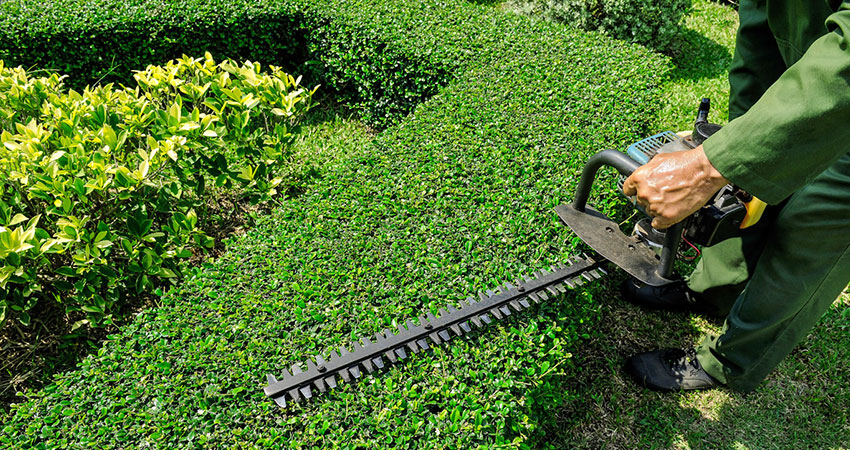Understanding Tree Pruning: An Overview
Tree pruning is a crucial aspect of tree care that involves the selective removal of branches and foliage. It is essential for maintaining the health, safety, and aesthetics of trees. Pruning not only improves the structural integrity of trees but also enhances their overall appearance.
Proper tree pruning can prevent potential hazards such as falling branches and overcrowded growth. It also promotes air circulation, allowing sunlight to reach the inner branches, thus promoting healthy growth.
Tree pruning techniques may vary depending on the species, age, and purpose of pruning. Some common pruning methods include crown thinning, crown reduction, and structural pruning.
What is Tree Pruning?
Tree pruning is the process of selectively removing branches and foliage from trees. It involves cutting away dead, diseased, or damaged branches, as well as those that interfere with power lines, buildings, or pedestrians. Professional tree pruners use specialized tools such as pruning shears, loppers, and chainsaws to carry out the pruning process efficiently.
The goal of tree pruning service is to improve the tree’s health, structure, and aesthetics while minimizing the risk of damage or injury. It is important to prune trees correctly to avoid excessive cutting, which can weaken the tree and make it more susceptible to diseases and pests.
Why is Tree Pruning Necessary?
Tree pruning is necessary for several reasons:
- To remove dead, diseased, or damaged branches that can pose a risk of falling.
- To alleviate structural issues such as crossed or rubbing branches.
- To enhance the tree’s appearance and promote healthy growth.
- To increase sunlight penetration and airflow within the tree’s canopy.
- To maintain safe clearance from power lines, buildings, and pedestrians.
Regular tree pruning not only ensures the tree’s longevity but also reduces the likelihood of costly property damage or personal injury caused by falling branches.
When it comes to tree pruning, it is important to consider the specific needs of each tree species. Different trees have different growth habits and requirements, which can influence the pruning techniques employed. For example, some trees may require more aggressive pruning to maintain their desired shape, while others may only need minimal pruning to remove dead or diseased branches.
Additionally, the age of the tree plays a role in determining the pruning approach. Younger trees may require more frequent pruning to establish a strong and well-balanced structure, while mature trees may only need occasional maintenance pruning to remove any hazardous or unsightly branches.
Furthermore, the purpose of pruning can also vary. Some trees may be pruned primarily for safety reasons, such as when branches are encroaching on power lines or posing a risk to nearby structures. Other trees may be pruned for aesthetic purposes, to enhance their natural shape or promote a more open and inviting canopy.
Overall, tree pruning is a delicate and skilled practice that requires knowledge of tree biology, proper pruning techniques, and an understanding of the specific needs of each tree. Hiring a professional arborist is often recommended to ensure that the pruning is done correctly and to avoid any potential damage to the tree.
Factors Influencing the Cost of Tree Pruning Services
The cost of tree pruning services can vary depending on several factors:
Size and Number of Trees
The size and number of trees to be pruned significantly impact the overall cost. Large trees require more labor, equipment, and expertise to prune, making the service more expensive. Additionally, if multiple trees need pruning, the cost may increase accordingly.
Tree Condition and Health
Trees that are diseased, infested with pests, or have extensive decay may require additional care and precautionary measures during pruning. Working with unhealthy trees can be more time-consuming and challenging, leading to higher service costs.
Location and Accessibility
The location and accessibility of the trees also play a role in determining the cost. Trees that are located in hard-to-reach areas or close to obstacles like buildings or power lines require more effort and specialized equipment, which may increase the overall cost of pruning.

Moreover, the proximity of the trees to urban areas or densely populated regions can also influence the pricing of tree pruning services. In urban settings, tree pruning companies may need to adhere to additional regulations and safety standards, which can add to the overall cost of the service. Furthermore, the presence of underground utilities such as pipes or cables near the trees may require extra caution and expertise during pruning, contributing to a higher service fee.
Seasonal Considerations
The time of year can also impact the cost of tree pruning services. During peak seasons, such as spring and summer, when demand for tree care is high, prices may be elevated due to increased competition among service providers. Conversely, scheduling tree pruning during the off-peak seasons, like fall or winter, when demand is lower, may result in more competitive pricing options for customers. Learn more about why professional tree pruning in Sydney Is a must for healthy trees.
Average Cost of Tree Pruning Services
The average cost of tree pruning services can vary depending on various factors, including regional price variations and different service providers.
Tree pruning is a crucial aspect of tree care that involves the selective removal of specific parts of a tree, such as branches or roots, to improve the tree’s health, appearance, and safety. Professional tree pruning services not only enhance the aesthetic appeal of your landscape but also promote the overall well-being of your trees.
Local vs National Average Costs
The average cost of tree pruning services can vary from one locality to another. Factors such as the local cost of living, competition among tree care companies, and the availability of specialized equipment can influence pricing. It is recommended to obtain multiple quotes from local tree care professionals to get an accurate estimate of the cost.
Additionally, national averages can provide a general idea of what to expect in terms of pricing. National averages take into account data from various regions and can serve as a benchmark for comparing local quotes. However, it’s essential to remember that local factors play a significant role in determining the final cost of tree pruning services.
Hourly Rates vs Flat Rates
Tree pruning services are typically charged either on an hourly basis or at a flat rate. Hourly rates are often employed for smaller pruning jobs, while larger projects may be quoted at a flat rate. Some companies may also offer package deals for multiple trees or ongoing maintenance.
When considering the pricing structure, it’s essential to evaluate the scope of work involved. Hourly rates can be advantageous for projects that require a shorter duration, while flat rates provide more predictability for larger-scale pruning jobs. Discussing your specific requirements with the tree care company can help determine the most cost-effective pricing option for your needs.
It is advisable to request a detailed breakdown of costs, including any additional fees for disposal or cleanup, to ensure transparency and avoid unforeseen expenses.
Additional Costs to Consider
In addition to the base cost of tree pruning services, there are a few additional costs that you should be aware of:
Emergency Tree Pruning Services
In case of storm damage or immediate safety concerns, emergency tree pruning services may be required. These services are often more expensive due to the urgency and potential risks involved. It is advisable to have a plan in place and contact a reputable tree care company to handle emergency situations promptly.
Cost of Disposal and Cleanup
Tree pruning generates a significant amount of debris, including branches, leaves, and other organic matter. The cost of disposal and cleanup should also be taken into account when considering the overall cost of pruning services. Some tree care companies include debris removal as part of their service packages, while others may charge an additional fee for cleanup.
Special Equipment Needs
Depending on the size and complexity of the tree pruning job, specialized equipment may be required. Equipment such as bucket trucks, wood chippers, and chainsaws can impact the overall cost of the service. Tree care companies invest in high-quality equipment to ensure the safety and efficiency of the pruning process. The use of specialized equipment may incur additional charges, so it’s essential to inquire about equipment costs upfront.
Tree Health Assessment
Prior to pruning, a professional arborist may conduct a tree health assessment to determine the best pruning approach. This assessment involves evaluating the overall health of the tree, identifying any diseases or pest infestations, and assessing structural integrity. The cost of a tree health assessment may vary depending on the complexity of the evaluation and the arborist’s expertise. However, investing in a thorough assessment can help ensure the long-term health and vitality of your trees.
How to Save Money on Tree Pruning Services
While tree pruning is an essential investment in maintaining the health and safety of your trees, there are ways to save money on these services:
Seasonal Discounts and Offers
Many tree care companies offer seasonal discounts or promotional offers during off-peak periods. It is worth inquiring about any ongoing specials or discounts when scheduling your tree pruning service.

Bundling Services
If you require additional tree care services, such as tree removal or stump grinding, consider bundling these services with tree pruning. Many tree care companies offer discounts for bundled services, resulting in overall cost savings.
Another way to potentially save money on tree pruning services is by considering the timing of the pruning. Some companies may offer discounts for scheduling pruning during their slower seasons, as it helps them maintain a steady workflow throughout the year. By being flexible with your timing, you may be able to take advantage of lower prices.
Furthermore, it’s important to note that regular tree maintenance can actually save you money in the long run. By investing in routine pruning to address small issues before they become major problems, you can prevent costly emergency tree services down the line.
